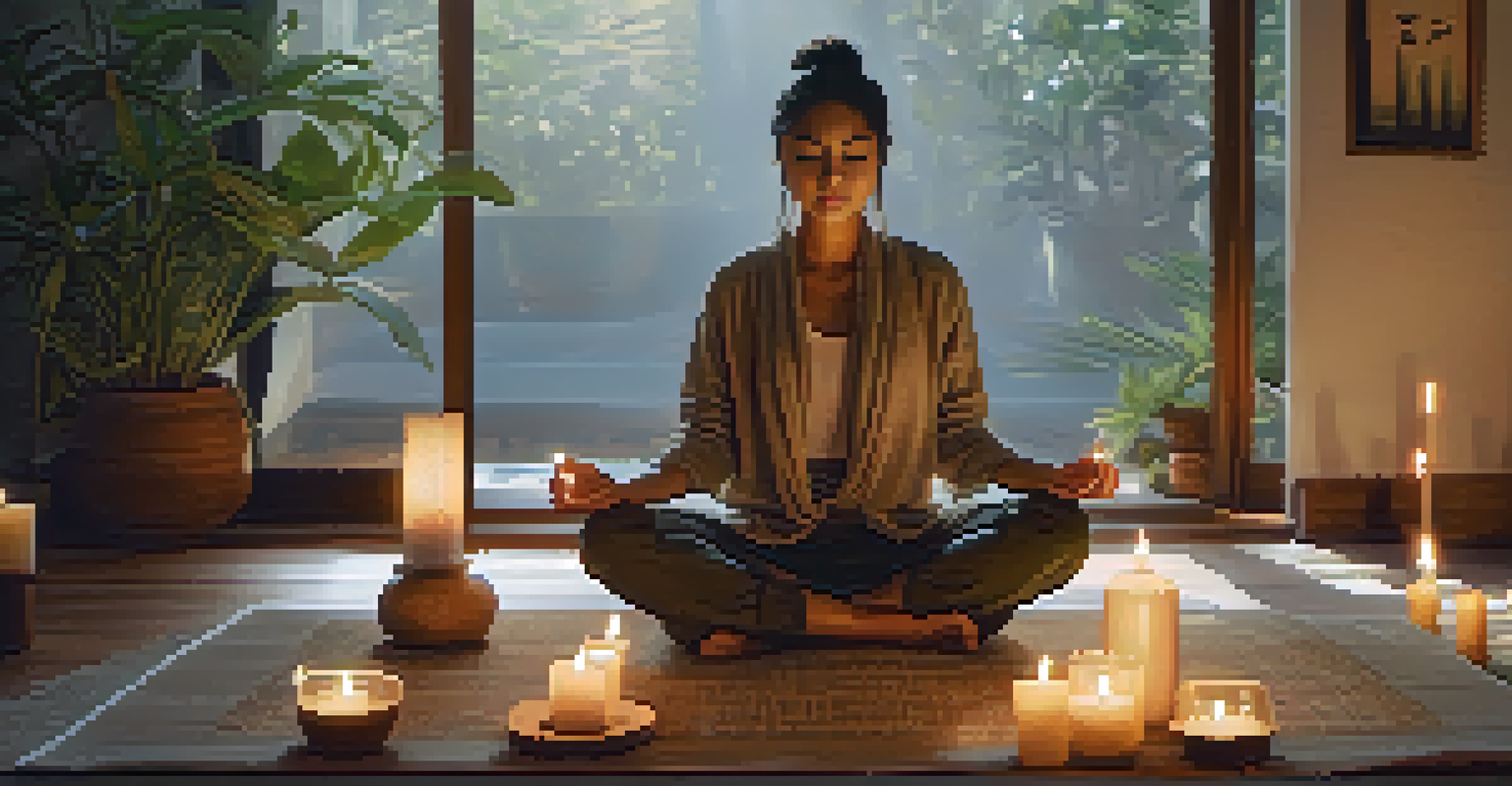Harnessing Creativity for Resilience and Problem Solving

Understanding Creativity and Its Importance
Creativity is often seen as an artistic trait, but it's much broader. At its core, creativity is about generating new ideas and solutions. In today’s fast-paced world, this ability is crucial for adapting to change and facing challenges head-on.
Creativity is intelligence having fun.
When we embrace creativity, we open ourselves to innovative ways of thinking. This can lead to breakthroughs in personal and professional life, as it encourages us to step outside of conventional boundaries. It’s like seeing a path where others see a wall.
Moreover, creativity is not a solitary endeavor; it thrives in collaboration. Sharing ideas with others often leads to unexpected solutions, reinforcing the idea that two (or more) heads are better than one. This collective creativity can be a powerful tool for resilience.
The Role of Resilience in Problem Solving
Resilience is the ability to bounce back from setbacks and maintain focus on our goals. It’s essential for navigating the challenges that life throws our way. When we encounter obstacles, a resilient mindset allows us to adapt and find solutions rather than giving up.

Think of resilience as a rubber band: it stretches under pressure but snaps back into shape once the pressure eases. This flexibility is vital in problem-solving, as it enables us to adjust our strategies without losing sight of our objectives.
Creativity Fuels Innovation
Creativity encourages new ideas and solutions, essential for adapting to challenges in both personal and professional settings.
Ultimately, resilient individuals are more likely to approach problems with a positive attitude. They see challenges as opportunities to learn and grow, fostering a mindset that is essential for creative problem-solving. This combination is what makes resilience a key asset.
How Creativity Enhances Resilience
Creativity and resilience are intertwined; one fuels the other. When faced with difficulties, creative thinking allows us to explore multiple perspectives and options. This not only helps in finding solutions but also in reducing stress and anxiety associated with problem-solving.
Resilience is not about avoiding the fall, but about rising after we fall.
For example, when a project hits a snag, a creative approach might involve brainstorming unconventional solutions. This process can uncover new paths that we may not have considered otherwise, reinforcing our confidence in overcoming obstacles.
Moreover, engaging in creative activities can boost our emotional resilience. Whether it’s painting, writing, or even cooking, creative expression helps us process feelings and regain a sense of control, making it easier to tackle challenges head-on.
Practical Techniques to Foster Creativity
Fostering creativity doesn’t require a magic wand; it just takes practice and the right environment. One effective technique is to set aside time for brainstorming without judgment. This can be as simple as jotting down ideas on a notepad without worrying about their feasibility.
Another technique is to change your surroundings. A new environment can stimulate different thought processes and inspire fresh ideas. Whether it’s working in a café or taking a walk in nature, changing scenery can lead to unexpected bursts of creativity.
Resilience Enhances Problem-Solving
A resilient mindset allows individuals to bounce back from setbacks and see challenges as opportunities for growth.
Finally, embrace playfulness in your creative endeavors. Approaching tasks with a light-hearted attitude can free your mind from the constraints of routine thinking. Remember, some of the best ideas come when we allow ourselves to think outside the box.
Creating a Culture of Collaboration
Collaboration is key to harnessing creativity and resilience in any team or organization. When team members feel safe to share ideas, they are more likely to contribute creatively. This open environment fosters innovation and collective problem-solving.
Regular brainstorming sessions can be an excellent way to cultivate this culture. By encouraging everyone to participate, you tap into a wealth of diverse perspectives that can lead to creative solutions. It’s like a potluck where everyone brings their favorite dish, creating a feast of ideas.
Additionally, celebrating both successes and failures as a group reinforces the idea that every experience is a learning opportunity. This approach builds resilience within the team, making them more adept at facing future challenges together.
The Power of Mindfulness in Creativity
Mindfulness is the practice of being present and fully engaged in the moment. It can significantly enhance creativity by allowing us to clear mental clutter and focus on the task at hand. This clarity can lead to deeper insights and innovative ideas.
Incorporating mindfulness techniques, such as meditation or deep breathing exercises, can help calm the mind. This state of relaxation is often when our most creative thoughts emerge, as we allow our brains to wander freely without judgment.
Collaboration Boosts Creativity
Working together in a supportive environment fosters creative thinking and collective problem-solving, enhancing resilience.
Furthermore, practicing mindfulness can help build emotional resilience. By becoming more aware of our thoughts and feelings, we can better manage stress and respond to challenges with a creative mindset.
Real-Life Examples of Creativity and Resilience
Let’s look at some inspiring examples of creativity and resilience in action. Consider how companies like Apple and Google encourage creative thinking within their teams. They foster environments where employees feel empowered to experiment and innovate, leading to groundbreaking products.
On a personal level, many artists and writers draw on their struggles to fuel their creativity. For instance, famous authors often use their life experiences, including hardships, to create compelling narratives that resonate with readers. This not only showcases resilience but also highlights the transformative power of creativity.

These examples remind us that creativity isn’t just about artistry; it’s a vital tool for overcoming adversity. By embracing both creativity and resilience, we can navigate life’s challenges and emerge stronger.